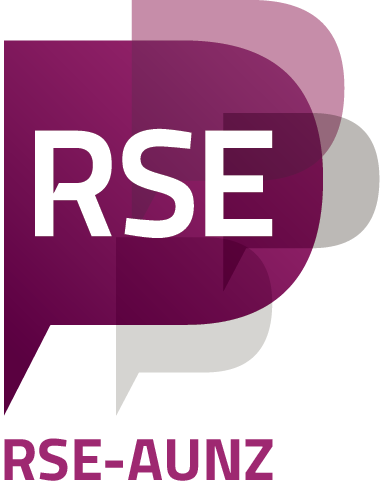News
-
Minutes Of Scm 30
RSE Steering Committee Meeting October 2023 (Tue 24th October)
-
Minutes of Steering Committee Meeting No.29
Attending:
- RM
- JB
- MS
-
Minutes of Steering Committee Meeting No.28
Attending:
- MS
- RM
- JB
- JS
-
RSE Stories: An Interview with Dr Adam Sparks
RSE Stories: An Interview with Dr Adam Sparks
July 31, 2023
Posted by Johanna Bayer, 31 July 2023
This post was originally published as a news item on the Australian Research Data Commons website (30 June, 2023).
Shaping Research Software: An Interview with Dr Adam Sparks
We spoke with Dr Adam Sparks, a bioeconomic modeller at the WA Department of Primary Industries and Regional Development who leads a team that develops software for agricultural decision making and research.
Published: 30 June 2023
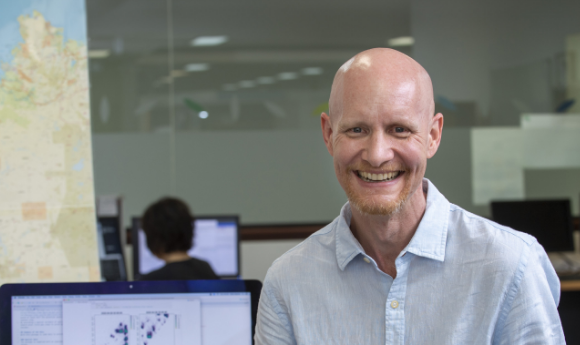
As part of our Research Software Agenda for Australia, the ARDC is working with the research community to shape better research software in order to recognise it as a first-class output of research. This interview is part of a series about research software engineers in Australia. Each month we talk to a leading research software engineer about their experiences and best-practice tips in creating, sustaining and improving software for research.
Continuing the series, we spoke with Dr Adam Sparks, a bioeconomic modeller with Western Australia’s Department of Primary Industries and Regional Development (DPIRD). He leads the Systems Modelling branch in the DPIRD’s Farming Systems Innovation Directorate. In this interview, we talked about the work of his team of 12, which includes data scientists, climatologists, meteorologists, biometricians and software developers.
Tell us about your team, their backgrounds and projects.
The Systems Modelling branch has quite a mix of interesting backgrounds. It includes 6 modellers, research software engineers and data scientists – Dr Rodrigo Pires, Anna Hepworth, Matt Foster, Kenyon Ng, Jimmy Ng and Matthew Antulov. Rodrigo and Anna are senior modellers that work on developing agricultural system models and models for agricultural decision support tools. Rodrigo has a background in applied agronomy and plant sciences, and Anna has a statistics background in human health.
Matthew Antulov, on the other hand, programs in Julia in a cloud-hosted environment using Docker to build large Monté Carlo whole-farm simulation models using real farm data. Kenyon is currently a PhD candidate at the University of Melbourne studying statistical machine learning and working with my team on a casual basis to do some machine learning. Jimmy is a student in the University of New South Wale’s Health Data Science postgraduate degree program. He is working with us supporting work we do with R and gaining work experience. Matt has been working with us to convert models from mobile apps, mostly written in Typescript, to APIs written in .NET.
We also have 3 software developers in the team – senior back-end developer Fumie Horiuchi, senior UX/UI developer Steve Collins and full stack developer Liz Mackle, who completed the UWA code camp just before joining the DPIRD as a junior developer. Additionally, 2 biometricians, Dr Karyn Reeves and Tinula Kariyawasam, support the DPIRD’s research by providing statistically sound research trial designs and trial analysis. They also provide training to staff in biometric analysis methods.
What kind of projects does your group develop?
The team currently maintains a suite of 7 decision support tools for crop disease management, released as mobile apps for free in the Google Play and Apple app stores. They are developed specifically to be used by agronomists and farmers, though other researchers are also using them. Here are 3 examples of our spray decision support tool apps, which were developed as a part of and maintained with support from a Grains Research and Development Corporation (GRDC) investment:
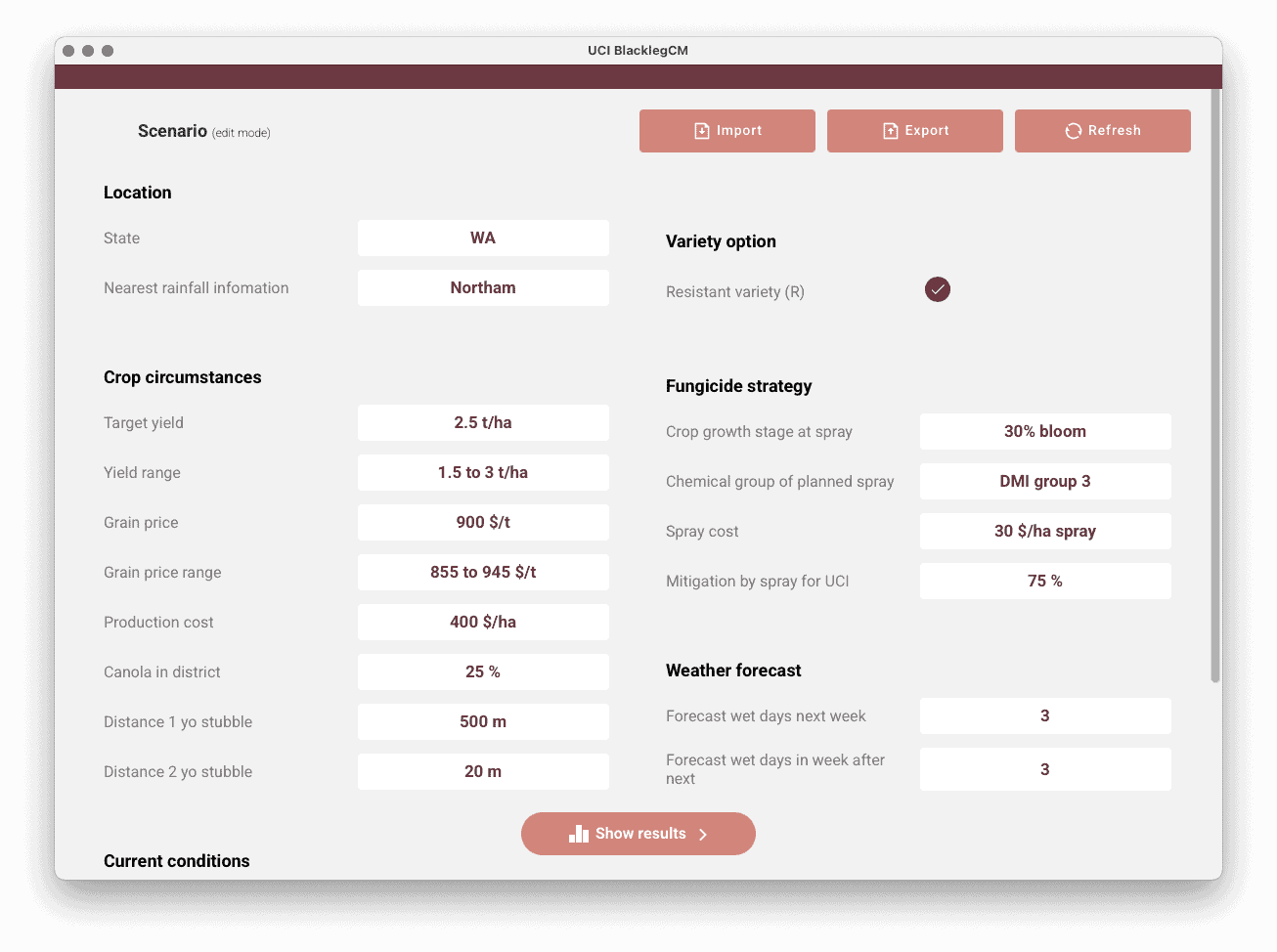
The mobile implementation of UCI BlacklegCM, a tool designed to help growers and consultants with management decisions for canola upper canopy blackleg infections in Australia. It factors in grain price, input costs, yield benefits, seasonal conditions, crop circumstances and conditions, state, fungicide strategies and other diseases to give the best-case, worst-case and most likely estimates of financial return from different management strategies
We also maintain 2 other sibling mobile apps available for free. One being the PestFacts WA Reporter app. Anyone can use it to submit quick reports or request identifications of insects and plant diseases in broadacre crops and pasture paddocks anywhere in the WA grainbelt. The second app is for New South Wales and Victoria, the PestFacts VIC and NSW app, also for reporting crop and pasture pests and beneficials. Both are part of the broader initiatives PestFacts WA (maintained by us) and PestFacts map (maintained by Cesar Australia).
Fungal disease in crops is of concern to growers and prompts disease control actions. Kenyon is building an object-detection pipeline in Python for identifying tiny mushroom-like structures from photos taken around WA. The pipeline automates the first review of the photos and curates those that need a second look before decisions are made and alerts are made based on the presence of these structures in the photos, which mean that crop disease will soon start to appear.
Used to counter the effects of soil acidification due to common agricultural practices, lime is vital to agriculture, but costly. One of our major projects is building a Monté Carlo model to simulate whole-farm liming for investment decisions. We’re working with the Grower Group Alliance, AxisTech and Curtin University’s Centre for Crop and Disease Management to be able to model a whole farm using actual farm data (WA Farm Data Sharing FA099). Using a new DPIRD API platform, called Extrata, we transfer farmers’ data to be used in modelling liming strategies to our Nimbus instance at the Pawsey Supercomputing Research Centre and generate liming strategy reports, which are mainly used by farmers and agronomists. At the heart of it, we’re using Julia to interface with a .NET API that Matt Foster wrote based on the iLime app. We chose Julia because it’s easy to use while also providing high performance. Matthew Antulov is the main architect of the model despite only having learned Julia since he started working with us. The goal of the project is that this model will support investment decisions beyond whole-farm liming in the future. You can read more about it on the Grower Group Alliance’s website.
We maintain several packages that support agricultural research, and we develop in R, Julia and Python. Most of our daily work is in R, which is certainly what I’m the most comfortable with. We use it in biometrics, especially the ASReml-R package for analysing agricultural research trials. We also use it to conduct Bayesian analysis for plant disease research and evaluate the state of openness and computational reproducibility in the discipline of plant pathology. We also have 2 R packages available as open-source-software via the DPIRD’s Farming Systems Innovation GitHub organisation account.
How does your team make these tools available?
You could say our development process is unique. As I mentioned, we mainly use R in our day-to-day work. Previously, developing models involved having meetings, maintaining spreadsheets and running executable Mathematica code past experts. The R Shiny apps have been a game changer. We now have R Shiny versions of most of the models for prototyping, testing and validation with plant pathology experts before we release them as mobile apps. We like to keep the R versions up to date. This allows us to implement changes to the model and test with large data sets and get user feedback interactively in a reproducible programmatic environment. The model would be modified by Anna, tested in the R version and then translated into an app using TypeScript by Fumie with Steve putting the finishing touches. This makes it easier to conduct unit testing and quicker to deploy changes to receive expert feedback. After the release, Liz would keep the app up to- date with changes with Steve and Fumie’s guidance.
Moreover, it was a pleasant surprise that some of the Shiny apps have been used for teaching exercises by university instructors teaching plant disease epidemiology courses. This is just one example of what one of our Shiny apps look like.
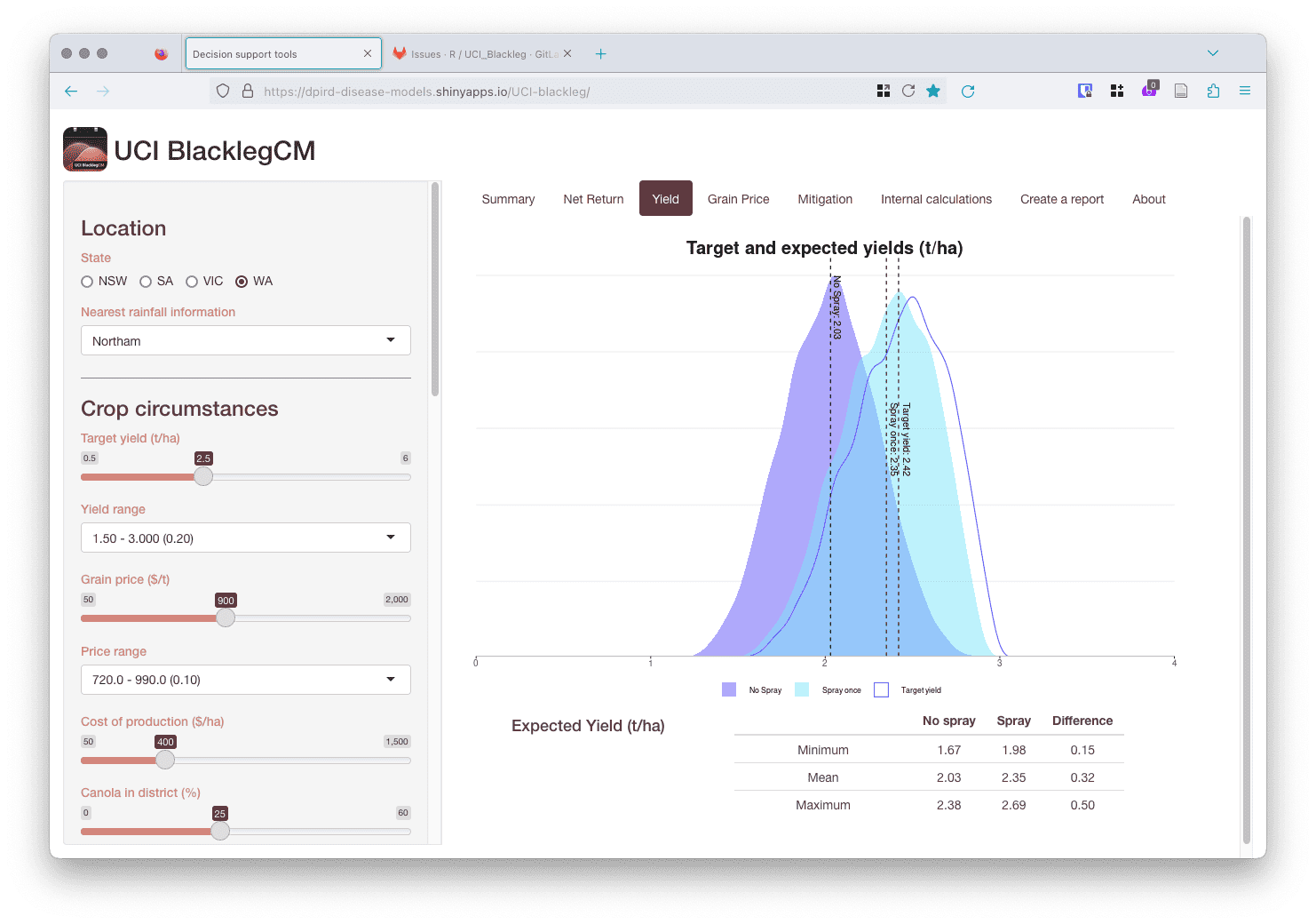
The R Shiny implementation of UCI BlacklegCM
What do successful team dynamics look like to you?
One of the best parts of the job is mentoring the team. Matthew Antulov has been a great asset to the team. He started with us after having only interned with a private mining company and doing some work with Python. It’s been extremely rewarding to see him grow and the quality of his work improve. Some younger early-career members also became mentors to junior members of the team. This led to a strong team dynamic, where someone will always be there to help and there’s no hesitation to ask questions.
We’re relatively lucky to have the entire team based in our main offices in Perth, rather than spread out. That makes it easier to maintain good dynamics as we can spend time together talking about shared interests. But of course not everyone is in the office at all times, so there’s our Teams chat, which has its fair share of silliness as well as seriousness.
What communities are you part of and recommend?
I’m currently a member of the Australasian Plant Pathology Society because of my training in botanical epidemiology and plant disease modelling. I’m also very involved in rOpenSci, where I serve as an Associate Editor for code review for both regular peer review and statistical software. rOpenSci has been a fantastic community to be a part of as an R programmer, and serving as an editor is a chance to give back to the community. While I’m not currently a member, I do also recommend the Statistical Society of Australia, if you’re interested in this area.
If you’d like to be part of the growing community of research software engineers in Australia, become a member of the RSE Association of Australia and New Zealand (RSE-AUNZ) – it’s free!
Keep In Touch
You can connect with Adam via Linkedin, Github and Mastodon. You can also learn more about him and his research on his personal website.
Research Software Awards Updates
Venables Award
The winners of the 2023 Venables Award for New Developers of Open Source Software for Data Analytics have been announced!
- Winners: Matthew Sainsbury-Dale and Andrew Zammit-Mangion for Fixed Rank Kriging (FRK)
- Runners-Up: Rex Parsons, Robin Blythe, Adrian Barnett, Susannna Cramb and Steven McPhail for predictNMB
- Honorable Mentions: Katie Buchhorn and Lukasz Mentel for gnnad; Mark Hanly for daggle
Presented by the Statistical Society of Australia (SSA) and sponsored by the ARDC, the award encourages new open-source software development from the Australian community with a view to support efforts to develop and share data science and statistics methodology. Learn more on the SSA website.
Stay tuned for the August instalment of our Shaping Research Software series, which will feature Matthew and Andrew.
Emerging Leaders in Astronomy Software Development Prize
The winner of the inaugural Emerging Leaders in Astronomy Software Development Prize has also been announced!
- Dr Manodeep Sinha, for outstanding contribution to the development of open-source astronomical software by an early career researcher
The prize is presented by the Astronomical Society of Australia (ASA) and sponsored by the ARDC. Learn more on the ASA website.
New Developers of Open Source Software in Ecology
The winners for this year’s New Developers of Open Source Software in Ecology award will be announced at the 2023 Ecological Society of Australia Conference, which will be held in Darwin from 3 to 7 July.
Learn more about the ARDC’s Research Software Agenda for Australia.
The ARDC is funded through the National Collaborative Research Infrastructure Strategy (NCRIS) to support national digital research infrastructure for Australian researchers.
Author
Dr Paula Andrea Martinez (ARDC)
Reviewed by
Jason Yuen (ARDC), Dr Tom Honeyman (ARDC)
Follow RSE-AUNZ
RSE Australia / New Zealand
A community for academics and professionals who work with software in the research domain.
Want to keep up to date? Sign up here!
-
RSE Stories: An Interview with Catherine Bromhead
Posted by Johanna Bayer, 23 June 2023
This post was originally published as a news item on the Australian Research Data Commons website (31 May, 2023).
Shaping Research Software: An Interview With Catherine Bromhead
We spoke with Catherine Bromhead, a software developer at Melbourne Bioinformatics and Australian BioCommons who maintains and keeps Galaxy Australia in production.
Published: 31 May 2023

As part of our Research Software Agenda for Australia, the ARDC is working with the research community to shape better research software in order to recognise it as a first-class output of research. This interview marks one year of our series about research software engineers in Australia! We started in June 2022 and have talked each month to a leading research software engineer about their experiences and best-practice tips on creating, sustaining and improving software for research.
Continuing the series, we spoke with Catherine Bromhead . Catherine is a software developer at Melbourne Bioinformatics and Australian BioCommons who maintains Galaxy Australia , a web-based platform for data-intensive biological research, and keeps it in production. Last December, she won the Outstanding Bioinformatics Software Maintainer Award by the Australian Bioinformatics and Computational Biology Society (ABACBS) .
Catherine, what’s your background and how did you end up in your current role?
My background is in mathematics and IT. I have worked as a full-stack software developer and also as a research technician in bioinformatics, where I became more interested in science. When the opportunity came up to work in Galaxy administration at the University of Melbourne, I was excited to work with open-source bioinformatics research software.
What’s your day-to-day role as a maintainer?
My main role is to keep the Australian BioCommons’ Galaxy Australia service running. This includes maintaining deployment code, stopping disks from filling up, troubleshooting issues as they arise and adding automated tasks to assist with all of the above. I look after the installation of tools and reference data onto Galaxy Australia. As part of the Galaxy Australia team , I monitor and maintain software on over 50 virtual machines distributed over Australia. Additionally, as part of the global Galaxy community , I contribute bug fixes and improvements to multiple Galaxy GitHub projects .
What other activities are you involved in as a Galaxy administrator?
I’ve recently been involved in teaching at the 2023 Galaxy Admin Training , hosted in Belgium. Instructors from around the globe came together to teach Galaxy administrators about the ins and outs of setting up a quality Galaxy server. We taught students how to set up their own Galaxy servers with version-controlled Ansible code, as well as methods of monitoring and maintaining their servers and customising job scheduling on Galaxy. I contributed to updating and testing training material in the lead-up to the event and led some of the tutorials. I thoroughly enjoyed the experience, and the students picked up the material quickly.

What does winning the Outstanding Bioinformatics Software Maintainer Award mean to you and your career?
It was an honour for me to win this award and a proud moment for myself and for Galaxy Australia. The award is a great way to draw attention to the work of people who maintain research infrastructure. I owe a lot to Simon Gladman, my boss and mentor for 3 years, who nominated me for this. Simon was passionate about the Galaxy Project and Galaxy Australia and cared a lot about promoting and celebrating the team’s work. Simon passed away last November and is greatly missed by the local and international Galaxy communities.
What communities are you part of and recommend?
The international Galaxy Community is very active and welcoming. I recommend the matrix channels #galaxyproject_Lobby , #Galaxy_Training_Network_Lobby and #galaxyproject_admins .
If you are interested, the 2023 Galaxy Community Conference (GCC2023) will be held for the first time in Australia from 10 to 16 July. This is the annual gathering of the global Galaxy Community with opportunities to hear the latest developments, get training and meet everyone involved. Spread the news using the hashtag “#UseGalaxy2023” and have a look at the key dates! Regular registration closes on 16 June, and a late registration fee applies afterwards.
Keep In Touch
You can connect with Catherine via Linkedin or @cat-bro on Matrix .
If you’d like to be part of the growing community of research software engineers in Australia, become a member of the RSE Association of Australia and New Zealand (RSE-AUNZ) – it’s free!
Updates on Research Software Awards
Winners of the Venables Award for New Developers of Open Source Software for Data Analytics by the Statistical Society of Australia will be announced soon. Stay tuned for this and our next interview in the Shaping Research Software series, coming out in July.
Learn more about the ARDC’s Research Software Agenda for Australia.
The ARDC is funded through the National Collaborative Research Infrastructure Strategy (NCRIS) to support national digital research infrastructure for Australian researchers.
Author
Dr Paula Andrea Martinez (ARDC)
Reviewed by
Jason Yuen (ARDC), Dr Tom Honeyman (ARDC)
Follow RSE-AUNZ
RSE Australia / New Zealand
A community for academics and professionals who work with software in the research domain.
Want to keep up to date? Sign up here!
-
RSE Stories: An Interview with Cynthia Huang
Posted by Paula Martinez, 2 May 2022
-
RSE Stories: An Interview with Marcel Keller
Posted by Paula Martinez, 3 April 2022
-
RSE Stories: An Interview With Dr Melina Vidoni
Posted by Paula Martinez, 3 March 2022
-
RSE Stories: An Interview with Michael Roach
Posted by Paula Martinez on 5 February 2023
-
RSE Stories: An Interview with Fonti Kar
Posted by Paula Martinez on 6 December 2022
-
RSE Stories: An Interview with Varvara Efremova
Posted by Paula Martinez on 2 November 2022
-
RSE Stories: An Interview with Anthony Truskinger
Posted by Paula Martinez on 4 October 2022
-
RSE Stories: An Interview with Johanna Bayer
Posted by Paula Martinez on 6 September 2022
-
RSE Stories: An Interview With Lydia Lucchesi and Sam Nelson
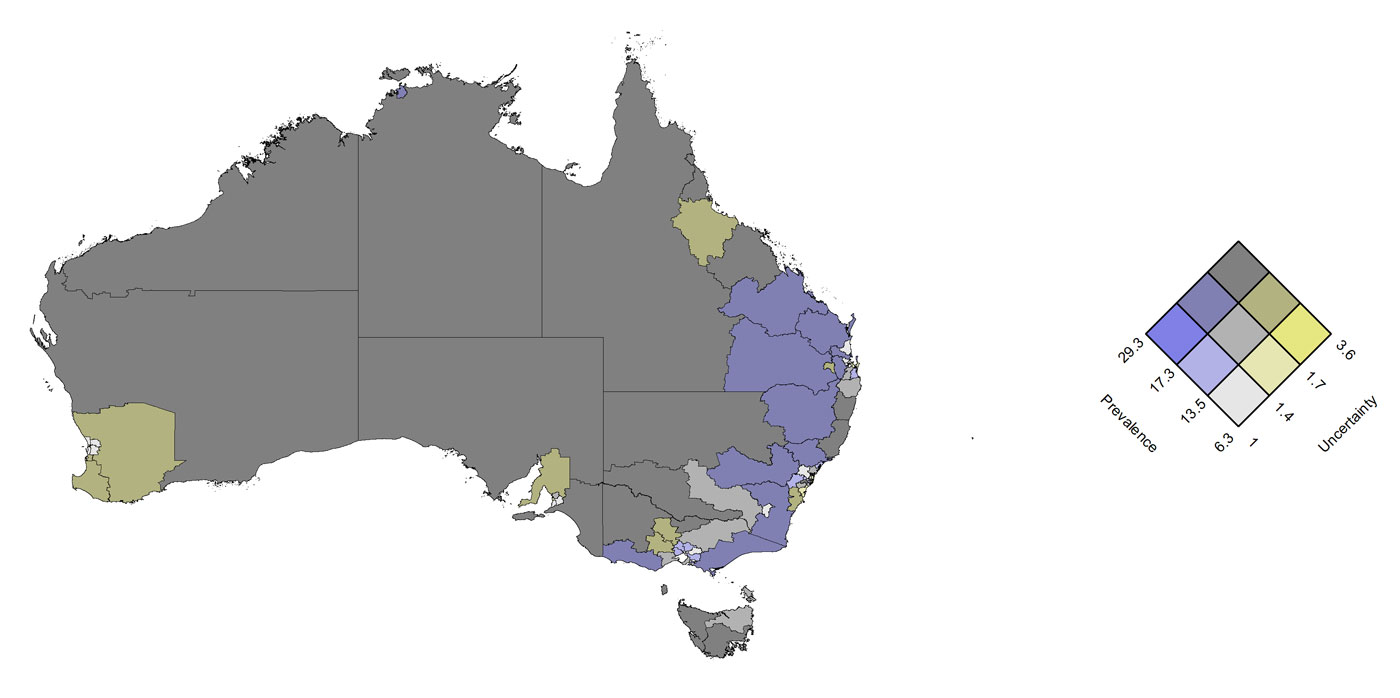
Daily smoking prevalence and associate standard errors on a bivariate map (left panel) and bivariate key (right panel) for Statistical Areas level 4 in Australia. Map created using Vizumap by the SPARSE project team at the Australian National University). Image credit: Lydia Lucchesi -
RSE Stories: An Interview With Dr Juan Nunez Iglesias

The napari viewer displaying several image processing and analysis steps performed on a 3D image of an olfactory projection neuron from the DIADEM challenge (top left). The image was thresholded with scikit-image, cleaned with a morphological closing, labelled, skeletonized, the skeleton was trimmed interactively in napari, then analysed with skan — each branch is coloured by its computed length. Image: Juan Nunez-Iglesias -
RSE Stories: An Interview With Dr Emily Kahl
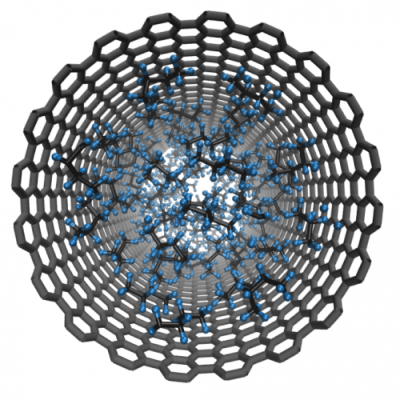
-
VIVE LA DIFFÉRENCE: Diversity, Equity and Inclusion in research software engineering
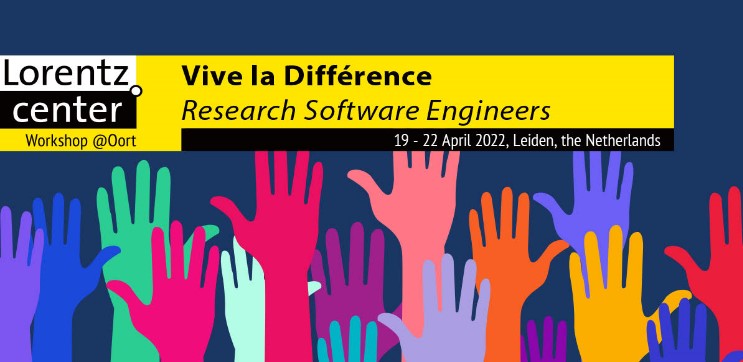
-
Minutes of Steering Committee Meeting No.24
Attendees
-
[JB] Justin Baker
-
[MS] Manodeep Sinha
-
[NL] Nooriyah Poonawala-Lohani (Chair)
-
[JS] Janet Stacey
-
[RL] Rebecca Lange
-
[RM] Rowland Mosbergen
-
[PM] Paula Martinez
Apologies
Discussion
For the detailed agenda see: GitHub Issue 38
Approval of Previous Minutes
Previous minutes unavailable at the time of meeting.
Planning Activities
-
Welcome Paula to the committee. Looking forward to working together
-
Change meeting time to 8am WA time
-
Quarterly online event - previously discussed planning of webinar series. Never got off the ground with the last committee. Will be somewhat superseded by the RSE conference. But a need for smaller, more frequent events (webinars or local meetups) to grow engagement outside of the annual conference is recognised. ARDC may be able to assist with organisation.
-
RSE Survey - closes end February. An event to present results would need to be in late March/early April ACTION tentative Report on RSE survey results in April. investigate live-stream options with anonymous chat function
-
Direction/Strategy of committee - We need to think about how we operate. Do we want to remain high level contributors with a lot of community engagement for direction through the mechanisms of the conference and mailing list engagement. Or deal with more minutiae. But maybe we build a starting point for the conversation. What does the future look like?
-
Potential RSE Australia conference/eResearch collab - Not discussed
-
Outreachy - Not discussed
-
Metrics for RSE contributions - Not discussed
-
Impact stories - Not discussed
-
Actions From Previous Minutes:
- None
Any Other Business
- None
Actions Carried Forward
[All]
- Create a permanent Agenda item for each meeting to discuss strategy. Organise an Action Workshop to define how we will move forward with setting strategy.
Next Meeting(s)
- Scheduled: Tues 22 March 2022 2pm AEDT/4pm NZT
Notes
These minutes have been drafted under part of the Chatham House Rule. This promotes openness, and inclusion, by not attributing any specific comment to any individual/s. The exception is that participants are necessarily listed as attendees of the Steering Committee meeting.
-
-
Minutes of Steering Committee Meeting No.23
Minutes of Steering Committee Meeting No.23
Attendees
-
[JB] Justin Baker
-
[MS] Manodeep Sinha
-
[NL] Nooriyah Poonawala-Lohani (Chair)
-
[JS] Janet Stacey
Apologies
-
[RL] Rebecca Lange
-
[RM] Rowland Mosbergen
Discussion
For the detailed agenda see: GitHub Issue 38
Approval of Previous Minutes
Previous minutes unavailable at the time of meeting.
Planning Activities
-
Confirmation of International RSE council rep
RM has been approved as our representative to the International RSE council. It is recognised that the meetings for that group are scheduled for 1am AEDT. We support utilising any opportunity to contribute in a different way if timezone makes attendance not workable.
-
RSE Survey outcome [MS]
The survey is still open. Response numbers are low. Recommendation to advertise to improve numbers.
-
Direction/Strategy for the new committee
This item was parked until the next meeting
-
Social Media guidelines
Raised that we need some guidelines to direct how messages should be sent to the community and a code of conduct on our social media accounts. There is nothing written down. Agreement that this would be a good idea. This could be added as rules on LinkedIn. All committee members are admins on the LinkedIn account.
-
au-RSE conference ideas
This item was parked until the next meeting
-
Domain registration
This process has been completed (rse-aunz.org). Autoforwarding does not appear to work.
-
Email aliases for domain
Pending completion of the domain registration. The email aliases will not work temporarily.
-
Actions From Previous Minutes:
- None
Any Other Business
-
eResearch NZ 2022 (9-11 Feb online)
A talk has been accepted on the RSE KPIs and recent events held (scheduled for Friday 11th 10.50am NZT). All members are invited to contribute to the content. Members reminded of the metrics white paper being worked on ‘Metrics’ white paper
-
Governance Document
Related to the code of conduct, a draft governance paper has been started
-
Housekeeping
The meeting invitation for this meeting to be checked to ensure it is recurring for all attendees DONE
-
Actions Carried Forward
[MS]
-
Source minutes of previous meeting from former secretary and circulate. done
-
Readvertise RSE survey to AU contacts
-
Check on Domain registration auto-forwarding error and email aliases
[NL]
-
Readvertise the RSE Survey to NZ contacts.
-
Create a google slide deck for eResearch talk and share with committee
-
Initiate a google doc based on the code of conduct from the last RSE conference as a start on social media guidelines
[JS]
-
Check feasibility of attendance at eResearch to support NL talk
[All]
-
Review and contribute to the first draft of ‘Metrics’ white paper
-
Review and edit Governance document as appropriate
-
A followup prep session for the eResearch talk has been arranged 8th Feb 10am AEDT/12pm NZT to finalise content
-
Support RSE survey by pushing advertising through their networks
-
Next Meetings
-
Scheduled: Tues 22 February 2022 2pm AEDT/4pm NZT
-
eResearch pre session - 8th Feb 10am AEDT/12pm NZT
Notes
These minutes have been drafted under part of the Chatham House Rule. This promotes openness, and inclusion, by not attributing any specific comment to any individual/s. The exception is that participants are necessarily listed as attendees of the Steering Committee meeting.
-
-
RSE Survey 2021
Complete the international RSE survey and help us understand the RSE community
-
End of Year Message from the Co-chairs
Dear RSEs,
2020 has been quite a year so congratulations for making it to the end! This year has certainly demonstrated that RSE-AUNZ is a strong and resilient community. While everyone probably had some initial jitters, we all settled into our new ways of working and collaborating.
From the RSE-AUNZ community perspective, we organised a few well-attended events.
-
We started the year with an in-person (different times!) RSE workshop at eResearch NZ 2020 where we had RSE’s discuss their career journeys.
-
We held our first ever fully virtual NZ RSE conference, which was attended by 150 members of the community from Australia and New Zealand.
-
-
RSE Impact Stories at eResearch Australasia 2020
In a session called RSE Impact Stories , Justin Baker (CSIRO) chaired a discussion with two experienced RSEs:
-
SORSE Call for Contributions
A global collaboration has established the International Series of Online Research Software Events, aka SORSE (pronounced ‘sauce’). The goal is to provide an opportunity for RSEs to develop and grow their skills, build new collaborations and engage with RSEs worldwide.
-
RSE-AUNZ Online Events
RSE-AUNZ, in association with the ARDC is planning to run regular online events on topics of interest to the RSE community.
-
RSE mini-conference at eResearch Australasia
The RSE Mini-conference on the 21st of October 2019 in Brisbane, Queensland is the first time in Australasia that the Research Software Engineer (RSE) community will bring together its members to share experiences and knowledge at their own conference. This is important as the 2018International RSE Survey conducted among Australian and New Zealand researchers found that the majority of the respondents wanted networking as the top priority of an RSE organisation.
-
Australian results of the 2018 International RSE Survey
In 2018, the RSE-AUNZ Association participated in an international survey [1] organized by the Software Sustainability Institute in the UK, with questions tailored for AU and NZ contexts [2].
-
Review of the RSE community at C3DIS
The Collaborative Conference on Computational and Data Intensive Science (C3DIS) 2019 was on from the 6th to the 10th of May. We asked for members of the RSE community to volunteer to help us run a Hacky Hour in the evening of Wednesday the 8th May and to also extend an invitation to the Friday the 10th all day RSE workshop.
-
The First Survey of RSEs in Australia and New Zealand
We are participating in the international survey for RSEs simultaneously run across Australia, Canada, Germany, Netherlands, New Zealand, South Africa, UK and USA. The purpose of this survey is to collect information about people who develop research software. This survey gives you the opportunity to express your views about your current job and your career path, and constitutes a first step towards identifying the key characteristics of the RSE community in Australia and New Zealand.
-
Welcome to the RSE Community in Australia and New Zealand
Hi there and welcome to the RSE Community in Australia and New Zealand.
Subscribe via RSS
